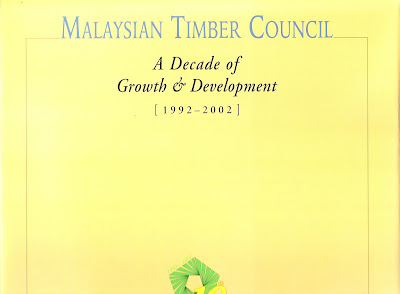Projects that come my way are of three types. The short-term ones are articles for magazines and other publications, and these take about three to five days to do, depending on the amount of research needed. I wrote a lot of these at the start of my writing life. Understandably, you can't expect to be paid much for this type of work. But if you do a lot of it, the fees can add up.
Medium-term projects would include manuals, reports as well as editorial content for annual reports. I've written quite a number of
annual reports over the years. These come at a certain part of the year as companies need to complete them in time for their annual general meetings. The work is quite stressful due to the tight deadlines, more so when clients take their time to revert with their comments on the drafts. But the fees that such clients are willing to pay make up for the worry lines.
Then there are the long-term projects - coffee-table books that would usually take about six to eight months, and corporate histories that can stretch up to two years to complete. I've yet to be commissioned to write biographies. There's good money in this type of work but it requires a lot of commitment to undertake.
Whatever the project, the process is the same. In the first place, it is critical to have a dedicated workplace in the house so as not to be distracted by whatever else that may be going on with the family. And it's also important to have a trusty workmate; I got myself a new one this year - an ultralight Acer Aspire. I've learned to appreciate the need for such a notebook after lugging my previous one about to meetings and interviews.
My new workmate in my home office.
And yes, there will be meetings to fine-tune what the client wants. For a book, the project brief forms the basis to conceptualise its structure and contents, and guide the research needed. The latter will cover document research, i.e. whatever publications, reports, newsletters and materials pertaining to the client's organisation; internet research on the industry and global as well as national economy for the period in question; and interviews of people who can provide stories and inside information. For the books that I wrote for
UMW and
Commerce Asset, I had to also delve into the country's history.
It pays to be organised at the research stage of a project. Otherwise, the writing will be a nightmare. I would already have the book's outline at the outset, so it would be a matter of putting the data that I've gathered in the right 'compartments'. The reading process needs to be systematic as well, marking parts that would be useful for the book.
Post-it notes on these annual reports and newsletters help me find the information I need.
After the research is completed, which may take a few months, the writing begins. The first line is always the most difficult because it will set the tone and style for the rest of the book. In fact, I would take days just to get the first paragraph right. But once that's done, the rest of the writing will flow easily (this is only if I had been meticulous in organising my research notes). Because there will be moments when I would be stumped for just the right word, I have a lot of reference books to get me through. Not just on language, but also on history, economics and other areas.
My language helpers; my books on history, society, economics and finance are on other shelves.
For a book, the writing process for the first draft takes about four months. I do a great deal of self-editing, at least a couple of rounds, during which I would go over my draft, changing words, tightening paragraphs and rearranging content. Once completed, of course to a given deadline, the first draft would be submitted to the client for review, after which the draft will be revised to cover any meaningful feedback. The final draft is then approved; my part is over and an editor then will peruse the draft for overall consistency and correctness. Thereafter, the book proceeds to the design, layout and production stage.
Writing a book can be a drain on the brain; it's actually rather mentally tiring. Which is why when I'm writing, I'm also drinking a lot of this...
Can't keep going without a cup of hot coffee!

















.jpg)






























